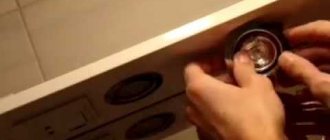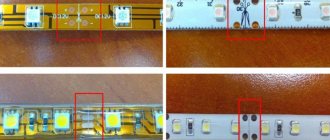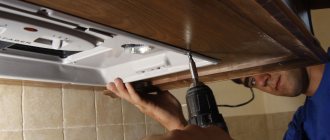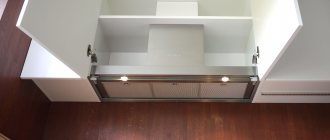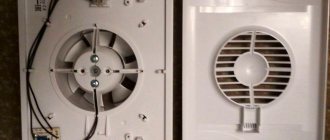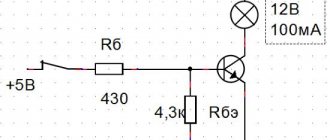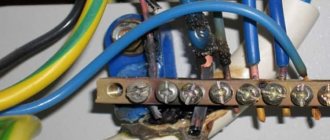Why is the hood humming?
If you are bothered by the loud noise of the fan in a new hood, then a similar inconvenience may arise after improper installation of the device. Shortcomings arise both during self-installation and after the services of a specialist. Read about how to properly install a kitchen hood.
Nikonorov Vladimir Alekseevich
Our expert. Specialist in the field of air conditioning and ventilation with 10 years of experience.
The device starts to work loudly if there are small voids between the hood and the wall or the fastenings are not firmly fixed enough. When the size of the ventilation duct is larger than the size of the exhaust duct, this can also cause noise.
The design of the air outlet pipe also determines how loud the hood will be. The presence of a large number of bends in the pipe and transitions between different pipe diameters is another reason for increased noise.
Inexpensive models can make a lot of noise already from the first days of operation, which is considered the norm. The reason for this is the use of cheap parts during the production of the device. When the hood is assembled in bad faith, this is also the source of the problem.
Nikonorov Vladimir Alekseevich
Our expert. Specialist in the field of air conditioning and ventilation with 10 years of experience.
When purchasing a hood for a small kitchen, choose models with low power, otherwise a powerful hood will interfere with a comfortable stay in the room. The data sheet must indicate that the noise level of the device does not exceed 40 dB.
Pay attention to other reasons that can cause increased noise:
- The plastic fan is located close to the device body. Under hot air currents, the blades begin to change their shape and then cling to the main body of the product.
- When the hood is installed at a distance greater than necessary, it begins to work twice as powerful and louder.
- If the device is not firmly attached to the wall and the air duct is movable.
Once you have managed to identify what is causing the noise in the kitchen hood, you will understand what to do about this problem by studying the recommendations below.
Why is the hood noisy: the main factors influencing the noise level
The hood cannot operate silently, since it has a powerful motor, and in some models - two. They make certain sounds, which sometimes intensify and turn into a powerful roar.
What affects the noise level:
- Power (performance) of the exhaust panel. The higher this parameter, the faster the motor rotates the fan, the more active the air passes through the air duct and creates noise.
- Kitchen area. If the hood is more powerful than the volume of the room requires, the noise will be loud.
- Dimensions (diameter) of the air duct. The smaller the cross-section of the air duct, the higher the air speed, and the louder the sound.
- Number of duct bends, especially 90°. The more there are, the more difficult it is for air to escape, its speed increases, and the noise intensifies.
- The number of transitions from material to material, from a round cross-section to a rectangular one and vice versa, from a small diameter to a larger one and vice versa.
- Length of duct. The longer it is, the higher the speed on the hood will have to be turned on, inevitably amplifying the sound.
- The material from which the air duct is made. Corrugation makes more noise, and plastic makes less noise, since its walls are smoother.
- The height at which the hood is located above the stove. If it hangs above the required distance, its operating speed will be greater to effectively remove air; Accordingly, the noise will increase.
- The quality of the exhaust panel fastening. If there is play between the wall and the hood, sound may occur due to vibration.
- The quality of the air duct fastening. If it is loose, it vibrates and makes noise.
- Poorly secured parts in the hood body - light bulbs, fan, etc.
Incorrect installation of the hood
Installing and securing the hood is not the easiest thing. Therefore, if you decide to do this yourself or involve another person who does not have experience in this matter, then installation errors are very likely. The most common of them are poor mounting of the hood, as well as when the diameter of the ventilation duct does not match. For vibration and unpleasant noise to occur, even a small gap that can form when attaching the housing between it and the wall is enough. By the way, such a gap not only creates noise, but also affects the performance of the equipment.
How to reduce noise from a kitchen hood
The most comfortable place to be is in the kitchen, where all the appliances are in working order, especially when it comes to the hood. If, when you purchased the device, you were satisfied with its operation, but now the noise interferes with your cooking comfortably, then you should quickly identify the cause of the problem.
Most often, the hood hums due to incorrect installation or as a result of breakdown during operation. Having understood in more detail the specific reason that affects the volume of the device, it will be easier for you to troubleshoot the problem.
How to make a kitchen hood quieter
It will be much easier to reduce the noise from a kitchen appliance when it is not yet installed. If you are at the purchasing stage, then do not choose a model that is too powerful. Give preference to devices that are built into the middle of the cabinet, as this measure will further reduce the volume when the device is operating. Take care of the soundproofing of the cabinet, which will reduce the amount of noise emitted by the device.
At the installation stage, to reduce noise from the hood in the kitchen, choose the correct distance between the appliance and the stove. Otherwise, you will have to constantly turn the device on to maximum power, which will make the device louder.
Firmly fix the hood body so that there are no additional vibrations during operation. For a powerful hood, select an air duct with a large diameter and vice versa. When installing the plastic air duct, try to make a small number of turns so that the hood does not make noise in the future.
While the device is operating, you notice that it begins to make a lot of noise, then take note of these recommendations:
- Check the cleanliness of the fan blades and clean them if necessary. If grease has accumulated on the fan, this can cause increased noise and vibration.
- Call a professional or clean the air duct of soot yourself. When performing this task, first remove the hood body.
- Clean the filter from grease to reduce noise from the device. When grease settles on the surface, smoke begins to pass through the filters more poorly, which is why you have to turn on the device at maximum power.
- Make sure the housing and duct are securely fastened, otherwise tighten the parts until they are screwed in tightly.
- Take care of the soundproofing of the cabinet if you have a built-in model in your kitchen. Install soundproofing of the air duct.
Check the cleanliness of the air duct and ventilation shaft. Do not forget that if the hood begins to make a lot of noise, then debris in the form of pebbles or plaster could get into the outlet pipe. When you can’t fix the problem yourself, call a specialist to help “reanimate” the device and identify the cause of the device noise.
Do not forget that it is not possible to make the device completely silent. If you want the noise level to be low, then choose models where the motors are located outside the housing or are installed outside the room.
How to reduce the noise of the hood?
There are 2 options - either do this at the stage of planning and installing the hood, or reduce the noise from an already installed device. Let's look at both.
How to achieve a minimum noise level if the hood is not yet installed:
- Make the correct calculation of the hood’s power so as not to purchase a model that is too powerful.
- Choose the quietest model with the required power level. The best option is a built-in (built-in) hood: its body is installed inside a cabinet, which will partially muffle the sound. The cabinet itself can be soundproofed if necessary. The rating of silent hoods can be viewed separately.
- Carefully follow all installation rules: the housing must hang rigidly, without the slightest movement in any direction.
- Install the plastic air duct, using as few adapters and turns as possible.
- Correctly choose the diameter of the air duct depending on the power. The smaller the cross-section, the louder the pipe will “sound” due to the strong pressure of passing air, and vice versa. The more powerful the hood, the larger the diameter of the air duct should be. For example, for models with a capacity of up to 1000 m³/h, it is recommended to use air ducts with a cross-section of 200 mm or higher. Air ducts with a cross-section of 100 mm will be “quiet” if the exhaust capacity is around 150-200 m³/h.
- Select the correct installation height for the hood. If you hang the case too high, then in order to effectively remove air, the device will have to be turned on at maximum mode (which means it will work louder).
- Additionally, sound insulation of the air duct can be used.
Usually, at the planning and installation stage, the noise of the hood is often ignored, and this issue arises after the device starts working. Therefore, it is much more important to figure out how to reduce the sound of an already installed device.
How to remove too loud “sound”:
- Check the strength of the housing and the air duct. If they are loose somewhere, if possible, they should be firmly secured, completely eliminating the play.
- If the hood is built-in, you can install sound insulation in the cabinet.
- Install soundproofing of the air duct.
- Clean the fan blades (they can become dirty, causing increased noise and vibration).
- Clean the filter. Due to the abundant layer of fat, air will pass through it worse, and the user will have to turn on the maximum operating mode where it would be possible to get by with the minimum.
- Clean the air duct. The task is not easy: to do this you will have to dismantle the hood body. Ideally, entrust such work to specialists: it is unlikely that it will be possible to cope effectively with improvised means.
- If the duct has a right angle (90º), it can be rounded. To do this, you can install cardboard in the turn, which will “smooth out” the turn. However, this narrows its cross-section, and if it was too small, then the problem can only get worse.
About the most popular hoods in Russia: Elikor products
How to clean a kitchen hood from grease: basic methods
Related Posts
Situation two – the hood began to make noise over time.
If a device fails even after long-term use, no one will be reassured by the excuse that it has already earned its price. Moreover, considering the cost of the equipment (even the budget Ventolux ADRIA 50 will hit your pocket), it is better to repair the old one.
Please note: if you hear a hum, the problem is in the fastenings. Most likely, they are loose and need to be tightened. For this and any other actions, it is worth calling specialists in order to maintain the warranty on the product.
What can you do yourself? It is advisable to check the air duct. Is there any debris there that makes sounds? Pebbles and plaster particles that are in the wrong place sometimes vibrate in the air flow, making noise and knocking.
Tip: To avoid worrying about the issue of hood noise, maintain the system regularly. From time to time you need to change the filters and clean them of debris and grease.
Why is the hood noisy?
The operation of any fan in a hood is always accompanied by noise. The level of this noise depends on the intensity of the fan rotation speed. As a rule, the noise level of a particular model is determined at the factory during its manufacture and is indicated in the technical passport .
If you notice that the device worked much quieter when it was new, and during its operation the noise increased noticeably, then you must first check the fastening of its structural elements. The fasteners could become loose over time due to the vibration that occurs during engine operation. Poorly secured hood parts can create additional background noise.
It is also necessary to check the ventilation shaft and air duct. Perhaps they are clogged or some debris (a piece of plaster, a small pebble, etc.) has gotten into the drain pipe. This foreign object, vibrating in the air flow, can make noise and knock. You should also check the connections at the inlet and outlet of the duct. The tightness of these connections could also be compromised, and loose surfaces contribute to noise generation.
If, when checking in the store, the hood worked relatively quietly, and after installation it began to make much more noise, it means that something was done incorrectly during its installation. The reason may lie in severe kinks in the air duct . In general, you should know that the more obstacles the air encounters on its way, the more noise is generated.
The problem also arises when a powerful hood, for example, with a capacity of 1000 m3/hour, is connected to a ventilation pipe with a diameter of 100 mm, and not 150 mm, as indicated in the instructions. In this case, not only the noise level during operation of the hood increases, but its performance also decreases.
Review of quiet and powerful hoods
Similar problems with the installation of a hood arise when home craftsmen install it themselves, without the necessary experience and knowledge. The likelihood of many mistakes is also possible when a non-professional is invited to install the hood.
Ways to reduce hood noise
First of all, the hood must be installed correctly. It must be securely fixed. The presence of backlash will lead to vibration, creating additional noise. To eliminate backlash, use polyurethane, rubber or foam gaskets.
It is also important to install the air duct correctly. Even the smallest gaps are unacceptable. The system must be completely sealed. The presence of gaps will lead to additional noise.
The duct material also plays a role. Conventional corrugation creates additional noise due to the presence of ribs over the entire area. Smooth plastic pipes are preferable. To reduce noise, the air duct should be equipped with sound-absorbing material, for example, isolon.
What are the noise level standards?
Any model of hood comes with a technical passport, in which the manufacturer indicates the noise level created. All people have different hearing perceptions, and what is normal for one may seem loud for another. Examples of noise from life in decibels:
- Rustling leaves in a light wind - 10 dB.
- A whispered conversation between two people at a distance of one meter is 20-25 dB.
- The sound of a wall clock ticking at night is 30 dB.
- A conversation between two people in specially low voices is 35 dB.
- Normal and calm speech - 40 dB (this mark should be maintained during the daytime with the plastic windows closed).
- The sound produced when typing on a typewriter is 45-55 dB (this sound is clearly audible and can get on the nerves of some).
- A conversation in a raised voice between two people at a distance of 5 meters is 60-65 dB.
- A vacuum cleaner is on, a busy street at rush hour, a loud screeching sound - 70-80 dB (if you are exposed to such noise for a long time, psychological discomfort and a buzzing in the ears appear).
- The sound created by a passing motorcycle, automobile transport or subway cars is 80-90 dB (such a loud sound can, over time, lead to headaches, temporary hearing loss and irritability).
DIY soundproofing
The entire air duct can be insulated with stone wool - pipe shells.
You can soundproof the entire air duct using rolled materials. The sound insulator is selected depending on the location where it will be installed:
- mineral wool - for steel air duct;
- polymer materials such as polyethylene foam, polyurethane foam - for ventilation;
- organic sound insulators - for furniture with a built-in hood.
Installation is carried out using the material’s own adhesive layer, using glue or using wire or clamps. In addition to installing sound insulation, it is recommended:
- install vibration-isolating pads or springs under the fans, this will reduce the noise of the hood fan;
- replace the rectangular air duct with a round one.
Special noise absorbers are inserted into the air duct as a coupling or adapter. In this case, it is no longer necessary to cover other sections of the air duct with sound insulation. This is one of the most convenient and rational methods of sound insulation.
Soundproofing a hood with your own hands
It only makes sense to hire professional installers to install noise insulation for a hood only if it is necessary to work on a complex, branched and extended air duct system. If you need to insulate a small ventilation system, for example, a private house, it is much easier and cheaper to do the work yourself.
The installation process is simple and will not create any problems; the main task will be to determine the source of the hum and install noise suppressors at the junction of the channels with the fan. Be sure to install fans on vibration-isolating pads or springs; this measure often helps resolve the issue without the need for any additional actions.
Installation of a continuous soundproofing layer is most effective in sections of channels passing in close proximity to living rooms or premises where people spend a long time. It is recommended to replace rectangular air ducts with round ones; complex sections of the system are most conveniently insulated with spray-on materials.
What noise can an exhaust system make?
During their operation, all hoods create extraneous sounds. If there is a rattling or vibration effect, then this indicates the presence of play in some place, a loosely fixed housing, air duct, or a problem in another mechanism.
If the exhaust system blades are dirty, you will hear the fan hum. Due to the narrow cross-section of the air duct, air flows at a higher speed and creates a hum. Since the motor is running when the hood is turned on, this process is also accompanied by a characteristic hum.
Knowing all the sounds, you can understand by ear whether they are related to a breakdown or not. Repair will be required in the following cases:
- When the sound suddenly changes during operation (extraneous sounds appear or noise noticeably increases). If the exhaust system has been installed for a long time and is regularly used in different modes, the change in sounds will become noticeable immediately.
- When extraneous noise, vibration and rattling appeared in the case. This may be due to play in the moving part.
- When the hood operates in normal mode without changing the sounds, but the air is not removed.
Source
How to reduce noise when the hood is operating
There are two ways to solve the problem. The first is to calculate the parameters of the exhaust panel before purchasing: power, height, width, distance to the air duct. Select the desired model - recirculation or with flow ventilation. The more correctly these parameters are calculated in accordance with the room where the hood will be installed, the higher the guarantee of no noise.
The second way is to correctly install the purchased hood and thoroughly take into account the features of its operation.
Methods of noise reduction and their features
Noise can be a feature of inexpensive models of hoods that are made of low-quality materials and incorrectly assembled at the factory.
Advice. When purchasing products in the middle and high price categories, you are more likely to receive a quality product.
Before purchasing, read the instructions for the device. It indicates the performance of the hood and what area of the kitchen the model is designed for. Powerful hoods in small spaces create increased noise levels. It is recommended to choose a device so that its power comes with a reserve. Then the hood is not turned on at the highest speed, and the noise level is less.
The diameter of the corrugation is selected in accordance with the power of the device. If you fit a small-section air duct to a powerful hood, it will make louder noise due to the high air pressure.
The relationship between the cross-section of the air duct and the exhaust parameters:
- in a hood with a capacity of about 1000 m³/h, the cross-sectional diameter should be 200 mm or more (but not less!);
- with a power of 150-200 m³/h, the cross-section should be 100 mm;
- for device power from 200 to 1000 m³/h, an air duct with a cross-section of 150 mm is used.
They install an air duct made of plastic, do not use other materials, and make a minimum of turns and adapters. If there is a right angle in the air duct that could not be avoided during installation, it is rounded. Cardboard is inserted into a 90° turn. It will smooth out the steep angle.
Attention! Cardboard for rounding the corner narrows the cross-section of the air duct. If it is not the right size, the noise will only increase.
Comply with installation rules. The device must be firmly fixed so that there is no play. The air duct is firmly pressed with ties, clamps, and, if necessary, filled with sealant.
Hang the hood at the correct height: from the working panel of the device to the electric stove there should be 60 cm, to the gas stove - 75-80 cm. If the device is placed at a higher height, the hood panel will ring because more power will have to be used. If they lower it below the required level, the hood parts melt. For example, melted fan blades often make noise. This noise can be eliminated only by replacing the broken part.
Clean dirty parts of the hood. When fan blades become dirty, they make noise and vibrate. The filter does not allow air to pass through due to the thick layer of fat. You have to turn the operating mode to maximum, this also increases the sound.
The hood is noisy in the kitchen, what should I do?
It is impossible to imagine a modern kitchen without a hood. The help of this device is difficult to overestimate. Air filtration, absorption of grease particles and unpleasant odors, combating soot - the hood performs all these functions with ease, thereby ensuring ideal cleanliness in the kitchen. To understand where the problem could have come from, it would be a good idea to study the operating principle and design of the device. As a rule, it consists of a metal or plastic case, decorated with elements of glass, wood and other materials.
When the hood is turned on, the fan starts working. It can rotate at different speeds. Speed switching is carried out using special buttons. The fan sucks air from the space above the stove and directs it to the grease filter. Then, depending on the type of hood, the air can either be removed outside or returned (already purified) back into the room.
Regardless of the model and cost, all hoods consist of such basic structural elements as:
- a motor that powers the fan;
- air intake grille;
- exhaust ventilation grille;
- switches and switches;
- filters;
- backlight (if the backlight doesn’t work, advice).
Advanced models are also equipped with special sensors that monitor the operation of the hood and report on the condition of its elements, for example, that it is time to change the filters.
Modern hoods can be of several types:
- filtering. Such devices suck in air, filter it and return it back to the room. Their advantage is that they do not cool the air in the room, unlike exhaust devices;
- excreting. Hoods of this type have an outlet to the general ventilation of the house or to the street, so contaminated air from the kitchen is completely removed. Such devices are more expensive than filtering devices and require more complex installation, but their operation is considered more efficient;
- mixed. Most modern hoods belong to this type. They are capable of filtering polluted air and removing it from the room.
The operation of any fan in a hood is always accompanied by noise. The level of this noise depends on the intensity of the fan rotation speed. As a rule, the noise level of a particular model is determined at the factory during its manufacture and is indicated in the technical passport.
If you notice that the device worked much quieter when it was new, and during its operation the noise increased noticeably, then you must first check the fastening of its structural elements. The fasteners could become loose over time due to the vibration that occurs during engine operation. Poorly secured hood parts can create additional background noise.
It is also necessary to check the ventilation shaft and air duct. Perhaps they are clogged or some debris (a piece of plaster, a small pebble, etc.) has gotten into the drain pipe. This foreign object, vibrating in the air flow, can make noise and knock. You should also check the connections at the inlet and outlet of the duct. The tightness of these connections could also be compromised, and loose surfaces contribute to noise generation.
We invite you to read: Beauty in a vase. How to preserve a bouquet of gerberas for as long as possible?
If, when checking in the store, the hood was operating relatively quietly, and after installation it began to make much more noise, it means that something was done incorrectly during its installation. The reason may lie in severe kinks in the air duct. In general, you should know that the more obstacles the air encounters on its way, the more noise is generated.
Design and principle of operation of the hood
To understand where the problem could have come from, it would be a good idea to study the operating principle and design of the device. As a rule, it consists of a metal or plastic case, decorated with elements of glass, wood and other materials.
When the hood is turned on, the fan starts working. It can rotate at different speeds. Speed switching is carried out using special buttons . The fan sucks air from the space above the stove and directs it to the grease filter. Then, depending on the type of hood, the air can either be removed outside or returned (already purified) back into the room.
Regardless of the model and cost, all hoods consist of such basic structural elements as:
- a motor that powers the fan;
- air intake grille;
- exhaust ventilation grille;
- switches and switches;
- filters;
- backlight (if the backlight doesn’t work, advice).
Advanced models are also equipped with special sensors that monitor the operation of the hood and report on the condition of its elements, for example, that it is time to change the filters.
Modern hoods can be of several types:
- filtering _ Such devices suck in air, filter it and return it back to the room. Their advantage is that they do not cool the air in the room, unlike exhaust devices;
- excreting . Hoods of this type have an outlet to the general ventilation of the house or to the street, so contaminated air from the kitchen is completely removed. Such devices are more expensive than filtering devices and require more complex installation, but their operation is considered more efficient;
- mixed . Most modern hoods belong to this type. They are capable of filtering polluted air and removing it from the room.
Why is the fan in the hood very noisy?
The kitchen is the place where the hostess spends most of her time. To simplify her work around the house, household appliances were invented. But today we will not talk about a refrigerator or a washing machine, but about an appliance that helps maintain comfortable conditions in the kitchen. Yes, you are thinking correctly - we will talk specifically about the kitchen hood. Today there are many different offers on the market, from different manufacturers, and you will definitely have something to choose from. Therefore, everyone in the house has a hood installed, exactly the one that suits you in design, size, functionality, and so on.
Situation three – the hood began to make noise after cleaning/adjusting/reinstalling
What if the situation is the opposite, and a previously quiet hood began to make noise after cleaning? After dismantling and maintaining the hood, the air duct connection may have been broken.
It is also worth checking a cabinet that has a built-in hood (for example, Candy CBT 6130). You should open the doors and evaluate how much the noise has changed. Even a small gap can disturb the peace of the household.
Perhaps the gasket between the connecting points of the device parts has been broken. Or perhaps it became unusable during use. You can eliminate the noise by changing the gaskets.
As you can see from the article, fixing the problem will take very little time if it is detected in a timely manner and specialists are called. And some issues, such as cleaning or replacing gaskets, can be solved yourself.
Watch the video.
Ways to reduce hood noise
First of all, the hood must be installed correctly. It must be securely fixed. The presence of backlash will lead to vibration, creating additional noise. To eliminate backlash, use polyurethane, rubber or foam gaskets.
It is also important to install the air duct correctly. Even the smallest gaps are unacceptable. The system must be completely sealed. The presence of gaps will lead to additional noise.
The duct material also plays a role. Conventional corrugation creates additional noise due to the presence of ribs over the entire area. Smooth plastic pipes are preferable. To reduce noise, the air duct should be equipped with sound-absorbing material, for example, isolon.
Are there silent hoods?
There are no hoods that do not make any noise during operation. Some manufacturers and sellers call certain device models silent, but this is just a marketing ploy. Any hood contains a fan in its design, which will definitely be heard during operation. But, manufacturers use special noise suppression and absorption systems to minimize the volume level of hoods.
The most effective solution at the moment is the NRS system. Unlike analogues, it has a number of advantages:
- optimization of the air path to reduce the number of obstacles;
- the presence of special V-shaped noise traps made of a special material that effectively absorbs sound;
- For the manufacture of the housing, special materials are used that have sound-absorbing properties. The walls of the case are quite thick;
- the fan is as far away from the air intake as possible.
Thanks to this, manufacturers are able to reduce the noise of hoods by almost 85%. The device operates almost silently. A noticeable hum only appears when high-performance operating modes are turned on.
Tags: hood, hum, do, kitchen
About the author: admin4ik
Standard noise levels for kitchen hoods and how to reduce the noise
When the exhaust system is turned on, it is always accompanied by noise due to the running fan. And the more intensely it rotates, the louder the sound. No hood can operate completely silently. The noise level of such household appliances is determined during the production process and is immediately included in the technical document. It is impossible to completely get rid of sound, but it can be reduced. This article describes in detail all the noise levels of modern kitchen hoods, and there are tips on how to reduce it.
Why is the hood noisy? How to reduce loud noise
Many users who recently bought a hood, instead of joy from the purchase, feel regret. It turns out that shiny new appliances, instead of decorating the interior and making the air in the kitchen crystal clear, disappoint with increased noise.
After all, it was heard that the equipment in the store was not so noisy! While the housewife paints sad pictures of headaches from constant noise, the owner is radical: he decides how to achieve the most silent operation of the hood. The article will give you a couple of tips on how to enjoy your purchase and clean air in the kitchen.
How can you reduce noise during operation of the hood?
To reduce the noise from the operation of the hood, you need to check the fastening of the device body to the wall or to a kitchen cabinet , since noise and vibration occur even with the slightest gap between the wall and the appliance.
Hoods built into cabinets
You can eliminate all existing gaps by sealing the empty spaces with polyurethane or foam rubber. It is also necessary to tighten all fasteners, and place a thin isolon backing on the vibrating surfaces.
When choosing a device, keep in mind that the technical specifications indicate the maximum power. Therefore, it is advisable to choose equipment with some power reserve . Then it will be possible to operate the hood not at maximum speeds, but at medium ones, which will help to significantly reduce the noise level. After all, when equipment operates at maximum speed, there is always much more noise than when it operates at minimum speed.
The noise level during operation of the hood also depends on the material from which the air outlet pipe or ventilation ducts are made. The quietest air duct is made of plastic, and the noisiest is made of thin corrugated metal . In this case, the noise can be somewhat reduced with the help of additional sound insulation. If the outer part of the air duct is covered with noise-absorbing material, the kitchen will become a little quieter, but the noise will not disappear completely.
The main noise is created not by the air duct pipes, but by the hood motor and fan blades. If a high noise level is a feature of a particular model (this parameter is usually indicated in the technical data sheet), then nothing can be done about it. Therefore, you should not believe the promises of some would-be masters who have one goal - to earn more money from gullible clients.
Manufacturers of kitchen hoods are constantly working on the problem of reducing the noise of their products. New models are already more advanced, so they are able to work much quieter. For example, in stores today you can find devices with a noise level of 35 dB. This corresponds to the sounds of a quiet conversation , so the noise of a working hood will not be annoying at all.
The quietest kitchen appliances
